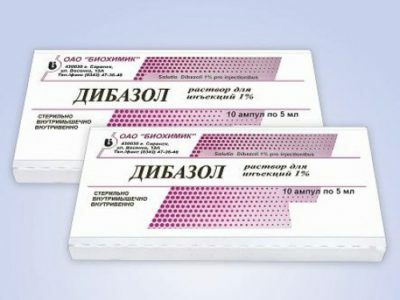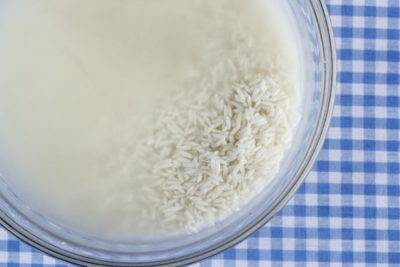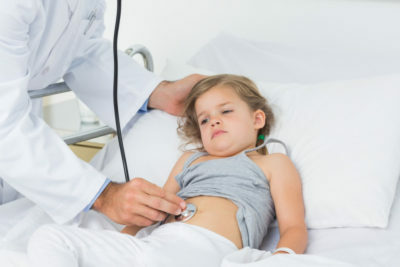1 Exocrine disfunctions
Pancreatic pathologies in women and men can develop against the background of exocrine insufficiency. In this case, the disease will be very difficult. This is explained by the death of the greater part of the parenchyma during the development of violations of exocrine nature. The amount of dead parenchyma reaches 90%.As a result, the patient has a lower level of enzyme production, which is necessary for the organization of metabolic processes.
The first signs of violations of the presented category are associated with a sharp decrease in the excretory function of the organ. This is expressed in the following manifestations:
- Cachexia, that is, exhaustion.
- The appearance of steatorrhea.
- Development of diarrhea.
- Bloating.

Recommended to read
- What you can eat when the pancreas hurts
- Causes and treatment of chronic gastritis in adults
- Symptoms of the disease and treatment of gastric cardia deficiency
- Effective remedy for gastritis and stomach ulcer
Disorders of the exocrine function of the organ in men and women occur in various pathologies. This concerns the chronic form of pancreatitis, during which the patient loses weight, there is a development of steatorrhoea. Disturbances in metabolic processes can lead to the onset of diabetes mellitus.
The syndrome of Schwamman is characterized by the appearance of signs as a result of pancreatic hypoplasia, which is a pathology of the autoimmune form. Lowering the production of lipase and trypsin, developing skeletal disorders, there is a neutropenia of the bone marrow.
An autoimmune disease is cystic fibrosis. In most cases( approximately 85% of patients) exocrine insufficiency develops. As a result, the patient develops fibrosis and cysts, there may be atrophy of the organ.
Disturbance of the exocrine gland function can occur after resection of the organ. This method is used in the development of chronic type of pancreatitis, during which an increase in intraprotective pressure is observed. The method is also used for pancreatic cancer or necrosis.
During the progression of particularly severe diseases, for example, in ulcerative colitis or Crohn's disease, the patient may develop a secondary form of pancreatic exocrine insufficiency. In any case, if these or other signs start to appear, the intervention of the specialist is required.
-
 IMPORTANT TO KNOW! Gastritis? Ulcer? To have a stomach ulcer not turned into cancer, drink a glass. ..Read the article & gt; & gt;
IMPORTANT TO KNOW! Gastritis? Ulcer? To have a stomach ulcer not turned into cancer, drink a glass. ..Read the article & gt; & gt;
2 Trophological insufficiency syndrome and intoxication
Intoxication syndrome is characterized by a number of changes on the part of different body systems. The patient suffers from weight loss, fever and tachycardia appear. In addition, the patient lowers pressure. There is a state of weakness, and the blood test reveals erythrocytosis and an increase in the ESR index.
In some situations, intoxication psychosis may develop. It develops due to hypoxia of the brain and the appearance of puffiness. Psychosis of the presented type is formed in the case of damage to the blood vessels of the brain of the generalized type. Especially often this ailment develops in people who have liver diseases and abuse alcohol.

Clinical manifestations of inflammation of the pancreas are characterized by euphoria, tremor of hands and the presence of fussiness. If symptoms are not eliminated and treatment is not carried out, then the psychosis progresses. The patient has an increase in the degree of excitation, there may be tonic convulsions and hallucinations. After this, there is a decline in excitement, motor and mental activity is inhibited, the patient falls into a state of stupor.
-
 Gastroenterologist IMPORTANT: "I beg you, if you began to worry about abdominal pain, heartburn, nausea, do not in any way do gases. .."Read more & gt; & gt;
Gastroenterologist IMPORTANT: "I beg you, if you began to worry about abdominal pain, heartburn, nausea, do not in any way do gases. .."Read more & gt; & gt;
Symptoms of pancreatic disease have other manifestations. This is the emergence of a syndrome of trophic insufficiency. This is the result of a deficiency of enzymes and subsequent digestive disorders.
Pancreatic disease symptoms are as follows:
- Vision is impaired.
- Weight loss.
- At the location of the pancreas, the skin darkens( Bartheheimer's symptom).
- Coordination of movements is disrupted.
- In the abdomen, subcutaneous fat is atrophied( Grotte symptom).
- Thinning of the skin occurs.
- The skin acquires a grayish shade.
- In some cases, mental disorders may develop.
3 Development of pain syndrome
Pancreatic diseases lead to rapid development of pain syndrome. Pain sensations are often the main manifestations during the development of pancreatitis. If the nature of the disease is acute, the pain can be described as long, strong and intense. The chronic form of pancreatitis is less pronounced. In some patients, signs of pancreatic disease may not be present.
After a while, the pain can disappear. This is a fairly long period of time( 5-15 years after the appearance of the first attack).This does not mean that the disease has disappeared. This indicates the death of nerve endings, which only worsens the situation. At the same time, the patient can develop diabetes and steatorrhea. After a while, there are other signs of the disease.
TIP FROM THE MAIN GASTROENTEROLOGIST
Korotov SV: "I can recommend only one remedy for the rapid treatment of Ulcer and Gastritis, which is now recommended by the Ministry of Health. .." Read testimonials & gt; & gt;
The development of pain syndrome occurs under the influence of many factors. This concerns inflammation of the gland, development of puffiness and ischemia. There is a temporary failure of the functions of the organ, but it is also possible to damage it. If the function is impaired, the pressure of the pancreatic type juice in the ducts increases, which causes an unpleasant sign.
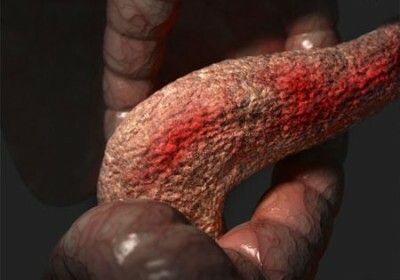
In the pancreas, symptoms in the form of pain are especially severe in the early years of the development of the disease. After 10 years, only half of patients have signs, and in 15 years - in 25% of patients. This confirms the above thesis about the fading of pain and the dying of nerve endings.
In addition to pancreatitis in diseases of the pancreas, symptoms in the form of pain may appear during the development of pseudocysts. There is an increase in size and proliferation, which causes squeezing of the duodenum and bile ducts. This leads to the onset of pain syndrome.
Symptoms in pancreatic disease in the form of pain have one feature. Often unpleasant symptoms occur in the epigastric region. However, pain can move to other places, which depends on the localization of inflammation in the gland. Thus, the pain of the pancreas can occur in the organ itself, after which they spread into the groin and back, sternum and other areas.
4 Other manifestations of
Thrombohemorrhagic form of the syndrome is manifested by the appearance of thrombi in the pulmonary, coronary and cerebral vessels. A similar situation occurs in the patient's portal system. During the dyspeptic syndrome, the patient experiences loss of appetite, eructation, flatulence and rumbling in the abdomen. In addition, the patient has increased salivation and vomiting.
Some symptoms of inflammatory processes may be a consequence of an increase in the size of the gland and squeezing nearby organs. The patient develops a mechanical type of jaundice, enlarges the spleen, darkens the urine and lightens the stool masses. Vomiting and itching may occur.
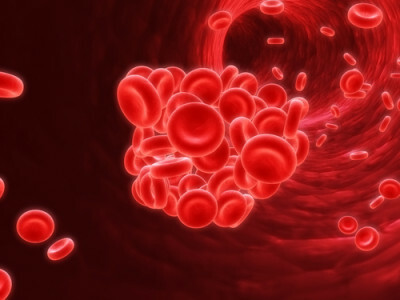
This syndrome begins to form during the development of pancreatic cancer, with the formation of so-called pseudocysts and with the appearance of complications of the chronic type of pancreatitis. There may be a syndrome and during the formation of various anomalies of the development of the gland.
If squeezing of the duodenum is observed, the patient develops an intestinal obstruction. This condition is manifested by dehydration of the patient's body, the appearance of frequent and profuse vomiting, and the formation of a trophic-type insufficiency. If splenic and portal veins have been squeezed, then ascites of pancreatic type is formed.
Pancreaticocardial type of syndrome is characterized by a decrease in blood pressure. There is an extrasystole, the heart rate increases, and the heart sounds are muffled. During the cholestatic syndrome, the patient develops pruritus and jaundice, the liver increases in size.
Diseases of the body can be characterized by other manifestations, which are also expressed in syndromes. With the chronic form of pancreatitis, there is a possibility of a neurasthenic syndrome. This condition manifests itself in the form of quick temper, development of motor retardation and general weakness. Often, the patient has headaches, worsens memory work, reduces attention, fatigue increases.
5 Patient's actions when signs are detected
Symptoms and treatment are related. From the manifestations and stages of the disease will depend on further intervention to eliminate pathology.
It is necessary to pay attention to the danger of self-treatment.
You should seek medical attention for the development of various symptoms. To establish the diagnosis, different methods are used. X-ray examination, ultrasound examination of the gland, computed tomography and other methods are used.
The patient's actions should consist of several steps that need to be coordinated with your doctor. It is necessary to adhere to a diet, it will not be superfluous to use preventive measures. They help to avoid diseases to healthy people. Patients should also not neglect prophylaxis, as such measures will improve the condition and well-being.

Preventive measures are aimed at preventing the inflammatory process and worsening the situation. Alcoholic products and tobacco products affect people's health and pancreas condition negatively. Prevention of diseases requires the rejection of these addictions. Irregular eating or eating fatty foods also adversely affect the condition of the pancreas. Such situations should be avoided.
It is recommended to use tea more often on the basis of herbs. They can be lingonberry, dandelion, blueberry, dog rose and nettle. If there are problems with the pancreas, then you need to give up eating fatty and fried foods. Under the ban is also acute products. You should not make snacks on the go.
The diet must be varied. Fractional food is the key to good health. Eating should be done 5-6 times a day in small portions. Between meals is recommended to keep the same intervals.
In the menu you need to include the black bread of yesterday's baking. You can use white bread. The first meals should form the basis of the patient's diet. Borscht, vegetable and milk soups, soup - that's not all the list of allowed food. You can eat meat, but not fat. In this case, low-fat chicken, rabbit meat and beef are suitable. Fish can be served boiled or steamed.
Vegetables can be used any. The exception concerns those vegetables that are cooked by the frying method. The diet includes the use of various cereals, pasta, dairy products.
Fats need to be eliminated completely. You can use vegetable and butter in small amounts. It is allowed to eat eggs, but not more than one per day. Among the drinks are allowed to eat weak tea, jelly and compote. It is forbidden to serve very cold and hot dishes, spices and fatty fish. Chocolate and ice cream should also be excluded.
- 1 Exocrine disfunctions
- 2 Trophological insufficiency syndrome and intoxication
- 3 Development of pain syndrome
- 4 Other manifestations of
- 5 Patient actions upon detection of signs
Often, the health problems are caused by the pancreas, the symptoms of the disease may be different. It depends both on the disease itself and on the stage of its development. However, most cases have similar manifestations. How to recognize the ailment and what to do in this case? Symptoms of pancreatic disease can be combined into several groups represented by different syndromes. The patient should always seek help from a medical institution, which will avoid problems with the pancreas in the future.
Do you have gastritis?
GALINA SAVINA: "How easy is it to cure gastritis at home for 1 month. A proven method - write down a recipe. ..!"Read more & gt; & gt;

